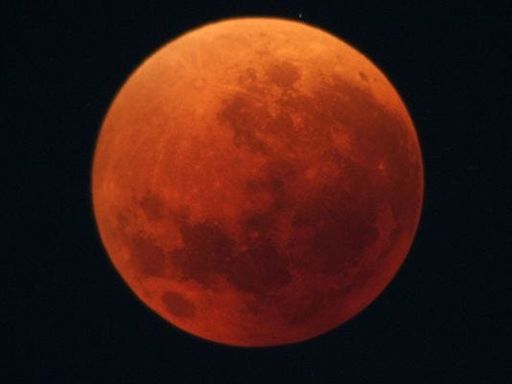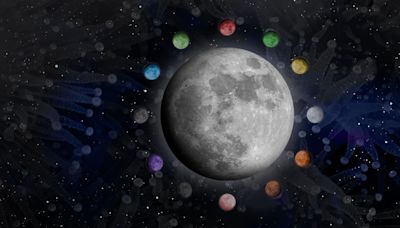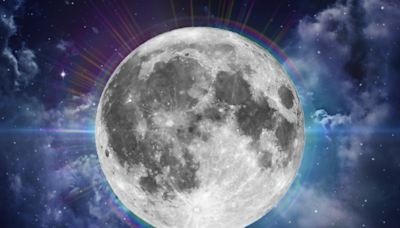Search results
Find out the dates and times of the moon phases in 2024 for Roanoke Rapids, North Carolina, USA. See the lunar calendar, special events, and articles about moon phases and photography.
- Lunar Calendar for Washington Dc, District of Columbia, USA
Moon Phases for Washington DC, District of Columbia, USA in...
- Israel
Israel - Moon Phases 2024 – Lunar Calendar - timeanddate.com
- New York
New York - Moon Phases 2024 – Lunar Calendar -...
- Black Moon
Invisible New Moon. New Moon is the Moon phase we cannot see...
- Lunar Calendar for Perth, Western Australia, Australia
Special Moon Events in 2024. Super New Moon: Feb 10; Micro...
- Seattle
Seattle - Moon Phases 2024 – Lunar Calendar -...
- Lunar Calendar for Tampa, Florida, USA
Lunar Calendar for Tampa, Florida, USA - Moon Phases 2024 –...
- Lunar Calendar for Boston, Massachusetts, USA
Lunar Calendar for Boston, Massachusetts, USA - Moon Phases...
- Lunar Calendar for Houston, Texas, USA
Lunar Calendar for Houston, Texas, USA - Moon Phases 2024 –...
- Blue Moon
The first Full Moon of spring—also known as the Easter Moon...
- Lunar Calendar for Washington Dc, District of Columbia, USA
- • New Moon
- • Waxing Crescent
- • First Quarter
- • Waxing Gibbous
- • Full Moon
- • Waning Gibbous
- • Last Quarter
- • Waning Crescent
- What Is The Moon’s Age?
- What Is Percent Illumination?
- GeneratedCaptionsTabForHeroSec
This phase is named as such because it starts a new lunar cycle. At this time, the Sun and Moon are in conjunction, meaning that they are closest together in the sky, on the same side of Earth (Sun→Moon→Earth). From our perspective, the Moon appears totally dark: We can not usually see it because we are facing the Moon’s shadowed side, which does n...
This phase occurs between the new Moon and first quarter phases. At the beginning of this stage, we see a thin, crescent-shape Moon, which, in the Northern Hemisphere, appears on the right side. The lit area slowly widens each day, covering more and more of the right side of the Moon’s surface until the first quarter phase, when the Moon’s entire r...
This phase got its name because at this point the Moon has traveled 1/4 of the way through its orbit. It’s a confusing label, though, because at this time from our perspective, 1/2 of the Moon’s surface is lit. In fact, both the first and last quarter phases are sometimes called a Half Moon. At first quarter in the Northern Hemisphere, the right si...
This phase occurs between the first quarter and the full Moon and describes the Moon when it is more than half-lit but not yet fully. At the beginning of this stage in the Northern Hemisphere, we see the right half of the Moon illuminated, plus a tiny fraction more extending into the left side. As the days pass, the light creeps farther left, cover...
This phase is named as such because, from our perspective, the full disk is illuminated. At this time, the Sun and Moon are in opposition, meaning that they are farthest apart in the sky, on opposite sides of Earth (Sun→Earth→Moon). Occasionally, if the full Moon’s position lines up correctly with the Sun and Earth, from our viewpoint, the Moon wil...
This phase occurs between the full and last quarter and describes the Moon when it is more than half-lit but not fully. At the beginning of this stage in the Northern Hemisphere, we see a disk almost fully lit except for a tiny sliver on the right side that is in darkness. As the days pass, the lit area shrinks from right to left until the last qua...
This phase got its name because, at this point, the Moon has traveled 3/4 of the way through its orbit and has just one more (the last) quarter to complete one revolution. This stage is sometimes also called the Third Quarter. At this stage, we see 1/2 of the Moon’s surface lit. In the Northern Hemisphere, the left side is illuminated; in the South...
This phase occurs between the last quarter and new Moon phases. At the beginning of this stage, in the Northern Hemisphere, we see the Moon’s entire left side almost fully lit and the right side in darkness. The lit area slowly shrinks each day, covering less and less of the Moon’s surface until it looks like a very thin crescent on the left side. ...
The term "Moon's age" is not a reference to how long the Moon has existed (about 4.5 billion years, if you're wondering), but rather how many days it's been since the last new Moon. As mentioned above, the span of time between one new Moon and the next is called a lunar cycle, lunation, lunar month, or synodic monthand on average lasts for 29.53059...
Percent illumination, listed in the Moon Phase Calendar under the Moon symbol, tells us how much of the Moon’s disk is lit, as seen from Earth. Looking at the calendar on this page, you can see that from new to full, the percentage increases, indicating the waxing stages, and from full to new, the percentage decreases, indicating the waning stages....
Find the current and future Moon phases for any date and location with this customized tool. Learn about the four main Moon phases, their meanings, and how they affect the Earth and its seasons.
Learn how the Sun's light creates moon phases as the Moon orbits Earth, and how to observe the Moon from space and from Earth. Explore the Moon's wobbly motion, earthshine, and daytime moons with NASA's interactive map and visualizations.
May 6, 2024 · Learn how the Sun’s light creates the different shapes of the Moon that we see each night. Explore the eight Moon phases, their names, and when to see them with activities and resources from NASA.
Learn how the Moon changes its shape and position in the sky over a lunar month. See the dates and times of the next primary and intermediate Moon phases, and watch a video explaining Moon phases.
Aug 30, 2023 · Learn how the Sun, Earth, and Moon create the eight distinct phases of the Moon and how they affect eclipses. Find out when and where to see the next solar eclipse in 2024.
Learn how the Moon orbits Earth and why we only see one side of it. Explore the causes and effects of lunar phases, eclipses and supermoons with NASA's scientific visualizations and animations.





